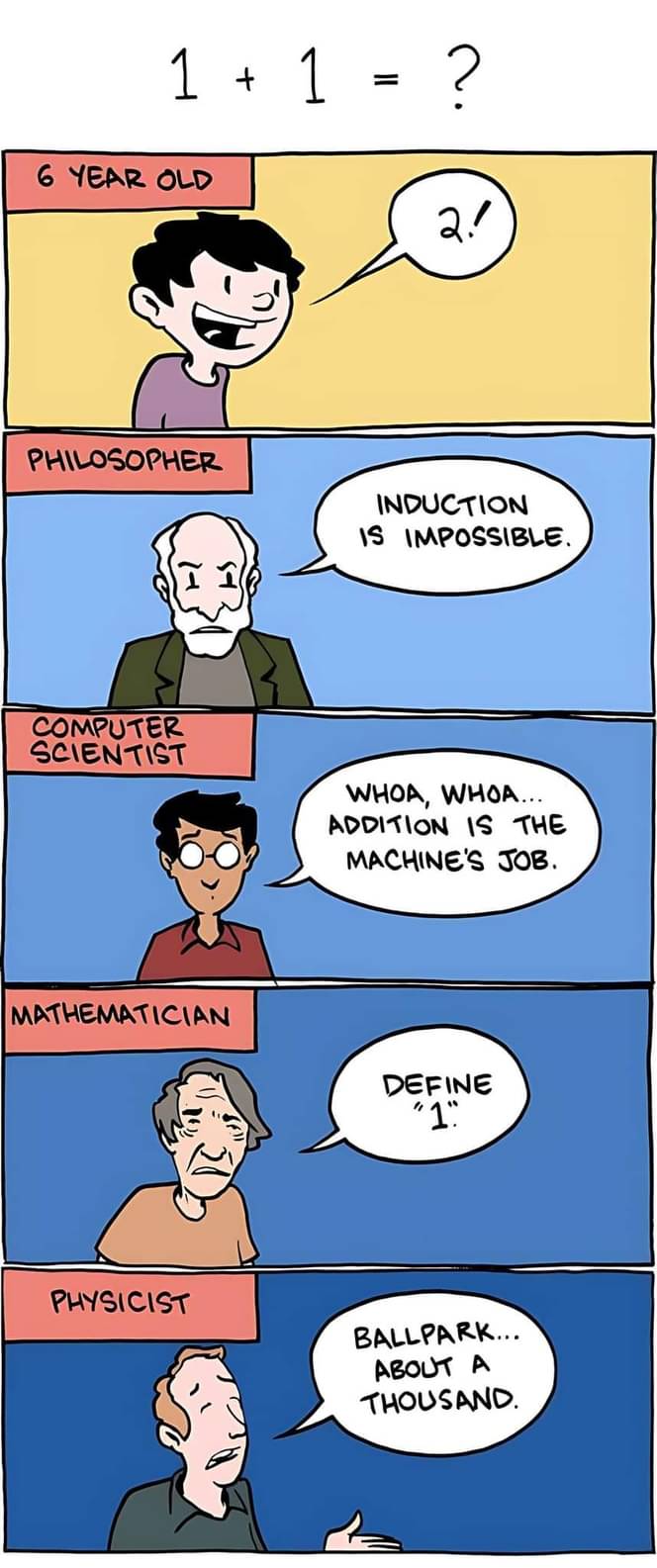this post was submitted on 22 Jul 2024
403 points (94.7% liked)
Science Memes
10923 readers
2264 users here now
Welcome to c/science_memes @ Mander.xyz!
A place for majestic STEMLORD peacocking, as well as memes about the realities of working in a lab.

Rules
- Don't throw mud. Behave like an intellectual and remember the human.
- Keep it rooted (on topic).
- No spam.
- Infographics welcome, get schooled.
This is a science community. We use the Dawkins definition of meme.
Research Committee
Other Mander Communities
Science and Research
Biology and Life Sciences
- [email protected]
- [email protected]
- [email protected]
- [email protected]
- [email protected]
- [email protected]
- [email protected]
- [email protected]
- [email protected]
- [email protected]
- [email protected]
- [email protected]
- [email protected]
- [email protected]
- [email protected]
- [email protected]
- [email protected]
- [email protected]
- [email protected]
- [email protected]
- [email protected]
- [email protected]
- [email protected]
- [email protected]
- !reptiles and [email protected]
Physical Sciences
- [email protected]
- [email protected]
- [email protected]
- [email protected]
- [email protected]
- [email protected]
- [email protected]
- [email protected]
- [email protected]
Humanities and Social Sciences
Practical and Applied Sciences
- !exercise-and [email protected]
- [email protected]
- !self [email protected]
- [email protected]
- [email protected]
- [email protected]
Memes
Miscellaneous
founded 2 years ago
MODERATORS
you are viewing a single comment's thread
view the rest of the comments
view the rest of the comments

Now define "+"
I love the comment that it's "occasionally useful"
Hmm yes.. set theory... I don't understand anything happening here
There is actually a really good explanation for us math-curious non-mathematicians here:
https://blog.plover.com/math/PM.html
That's some good read, thank you so much.
+is a map fromN×NtoNwherea + 0 = aanda + S(b) = S(a + b)(Sis the successor function that gives the next number).Then
1 + 1 = 1 + S(0) = S(1 + 0) = S(1) = 2.seems a little sus to use + to define +
No, it's correct. You define the operation by it's properties. It's not saying that "a plus 0 = a" but "the result of applying the binary operation '+' to any number with 0 should give the original number."
You have to have previously defined 1=S(0), 2=S(1), 3=S(2), and so on.